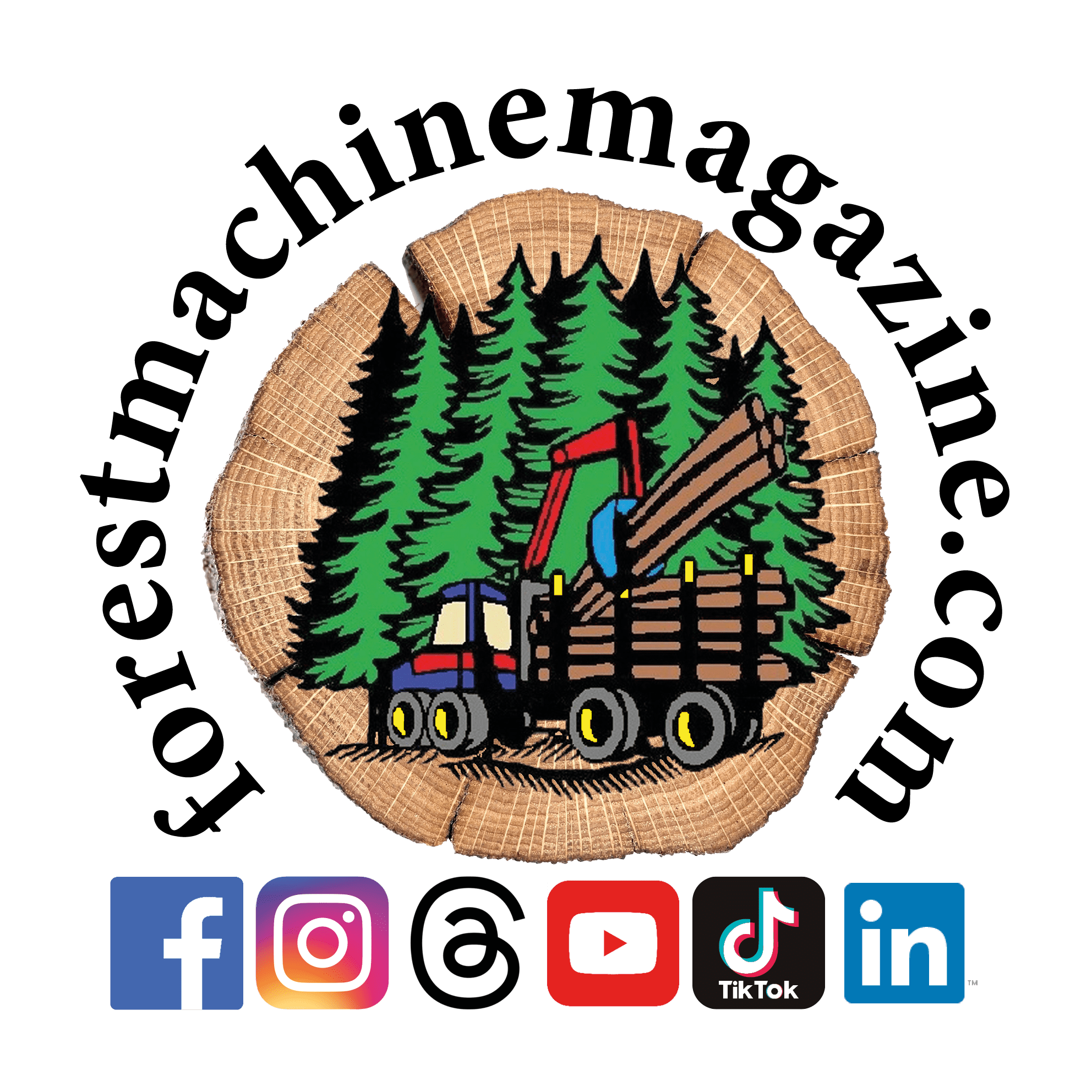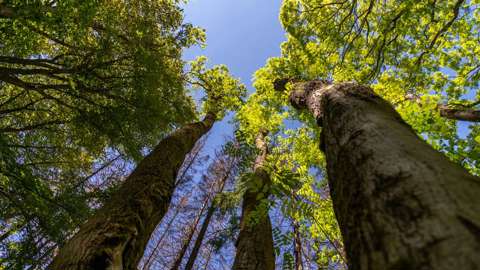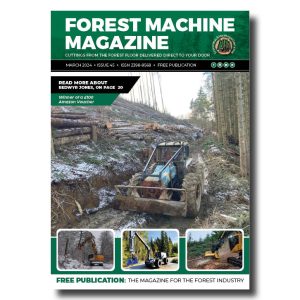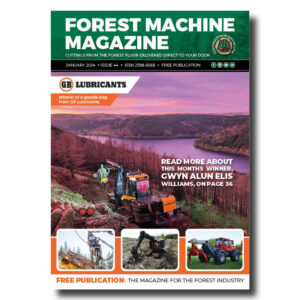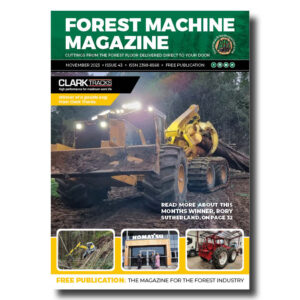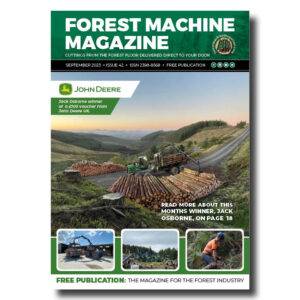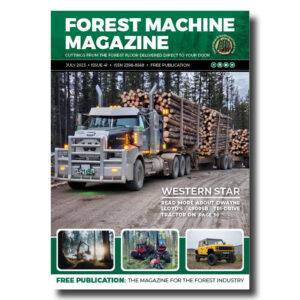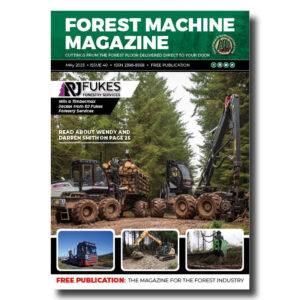Three million SEK has been awarded to the Forestry Research Institute to save the ash and elm trees
Image: Mostphoto
Saving the Ash and Elm Trees-the ash is threatened by the fungal disease ash disease. Like the elm, the ash is home to many species that are important for biodiversity. Its timber is also used industrially, including as a raw material for flooring.

-
That’s a remarkable amount of work hours for a single machine, the Norcar 600 owned by Erkki Rinne is taken well care of, it even has the original Diesel engine.
-
Kieran Anders is a forestry contractor working in the lake district. His work involves hand cutting and extracting timber using a skidder and tractor-trailer forwarder.
-
It is not possible to eliminate chain shot, but there are simple steps that can be taken to reduce the risk.
-
Arwel takes great pride in the fact that the mill has no waste whatsoever, “the peelings are used for children’s playgrounds, gardens and for farm animals in barns in the winter and the sawdust has multiple uses in gardens and farms as well.
-
Timber hauliers need to encourage young blood in, and also look after the hauliers we have, we need make the sector a safe and positive place to work.
FIND US ON
Related Posts
The government has allocated SEK 3 million to the Forestry Research Institute of Sweden in 2025 to breed disease-resistant seedlings of elm and ash. During the period 2026–2027, the amount will be increased to SEK 3.5 million per year.
The money is provided through a government assignment to the Swedish National Research Council Formas.
According to Skogforsk’s breeding manager, Thomas Kraft, Skogforsk has collaborated with SLU for several years to breed ash trees that are resistant to ash shoot disease. Funding has varied over the years and it was only in 2021 that it stabilised thanks to Sveaskog contributing SEK 1 million per year, earmarked for the work.
“It also meant that we could start working with the elm, which is threatened by elm disease. And now that the government is injecting additional funds, we can scale up the project, and that is very gratifying,” says Thomas Kraft.
The aim of the work is to develop seed and plant material that is more resistant to the diseases elm disease and ash shoot disease. The diseases have already caused extensive damage to the two tree species, which are now highly endangered in Sweden.
“The hope is that in the long term it will be possible to recreate deciduous forests where healthy elms and ash trees play an important role,” says Thomas Kraft.
Initiative from the government
The initiative is taking place in light of the fact that a government inquiry last year submitted the report “A future for elm and ash – processing, research and financing”, to the government. The report proposes specific measures to strengthen the resilience of tree species. Among other things, a national programme for resistance breeding, targeted research efforts and continued control of elm disease on Gotland, where 90 per cent of Sweden’s elms are still alive thanks to active efforts, are proposed.
“With the government’s investment, and growing international cooperation, there is now hope of saving two of Sweden’s most beloved tree species, and the many species that depend on them,” says Thomas Kraft.
In recent years, researchers, in collaboration with the public, have mainly located ash trees that appear to be resistant to ash shoot disease. The trees have been tested and used in breeding programmes, including at the Forestry Research Institute of Sweden’s research station in Ekebo, Skåne.
In the same way, the Forestry Research Institute now runs the so-called Alm Petition. Here, the public is encouraged to report living, vital elms that grow next to already dead elms. From the trees, the Forestry Research Institute wants to take twigs to test whether any of them have resistance to the fungus that causes elm disease.
“When it comes to ash, we have come further and therefore we are currently focusing on getting the work started with elm. We hope to produce disease-resistant seeds and seedlings, also made of elm,” says Thomas Kraft.
Facts about elm disease and ash shoot disease
Elm disease, which was discovered in Sweden in the 1950s, is a fungal disease that is spread by the beetle elm splinter beetle. When a tree is infected, it often dies within a year. The disease is now spread throughout the elm’s range, and without resistant trees, the control strategies are unsustainable in the long term.
Ash shoot disease, which was discovered in Sweden in 2001, is caused by a fungus that is believed to have come to Europe via imported Manchurian ash. Today, most ash trees in Sweden are infested, and a large number have already died. However, individual trees show some resistance, making it important to identify and propagate these individuals.
Both elm and ash are host trees for a large number of other species. The elm hosts about 250 species, of which 121 are red-listed. The ash hosts about 200 species, of which 94 are red-listed. When these trees disappear, many of these species are also at risk of extinction.
In addition to their ecological significance, the trees also have a strong cultural root. In Norse mythology, the ash Yggdrasil was the world tree, and according to the creation story, the first man was formed from an ash and the first woman from an elm.

Sign up for our free monthly newsletter here
Contact forestmachinemagazine@mail.com to get your products and services seen on the world’s largest professional forestry online news network.
#homeoflogging #writtenbyloggersforloggers #loggingallovertheworld
Written by loggers for loggers and dedicated solely to the equipment used in forestry operations.
